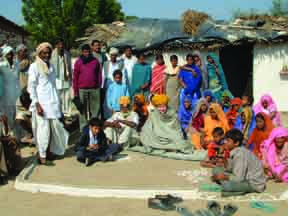The word ‘caste’ was imposed on the Indian idea of varna, jati and kula to engineer divide and rule benefits.
In this series, I explore the original ideas, meanings and aims related to Varna, Jati and Kula and at the same time will try to understand what really happened to this system to become so degenerated where people of one class started to hate another. The irony is, the lost knowledge in history is that the ancient varna system was to uplift the society and people to their highest potentials. Swami Vivekananda said, ‘”We believe in Indian caste as one of the greatest social institutions that the Lord gave to man.
We also believe that through the unavoidable defects, foreign persecutions, and above all, the monumental ignorance and pride of many Brahmanas who do not deserve the name, have thwarted in many ways, the legitimate fructification of this glorious Indian institution, it has already worked wonders for the land of Bharata and it destined to lead Indian humanity to its goal.”
This write up is a rediscovery of one of the most misunderstood systems in the world. We will soon discover why Portuguese ‘caste’ is not at all the Indian Varna System. We will also explore what some of the authorities such as Swami Vivekananda and Sri Aurobindo (both hailed from non-Brahmin family and are revered by majority of Indians) had to say on this. Later, we will see how varnashram is relevant even now and its social progress in this day and age. .
While the deeper understanding of the subject matter may not immediately solve the problem of discrimination, but can definitely awaken the social leaders to realize what India’s goal has been in terms of progress and evolution, and what other possible alternative options are available to deal with social harmony and progress.
The problem with caste
Nowadays, the discussions on social discrimination on caste lines have been reduced to ‘upper caste vs. Dalits’ debate. In politics, it is a fashionable and useful tool. One takes it for granted that the caste system is the real culprit and thus must be done away with, despite the fact that caste distinction in the urban area is fast eroding and that many people from ‘upper caste’ are economically or politically weak. Very few go deeper into the genesis and formulations of social structure that dates back over a few centuries. A majority blamed Manu or other Hindu scholars or scriptures for the social ills. Be that as it may, how come those who sang sarva mangalm suddenly became ‘casteists’ and persecuted their own people? They did not turn evil overnight!
Due diligence is par for the course for the scholars. This leads to two pertinent questions: How did Indians survive the massive onslaughts of foreign forces and how would they today appreciate the struggle of their ancestors, countless agony, torture and deaths they faced to live with pluralism and democracy as their core value?
The people or at least their ancestors who advocated concepts such as sarva mangalam (welfare for all) or sarve bhavantu sukhinah (let everybody be happy, healthy and blessed)’ or even aham brahasmi (I am the Brahman) must have been of extraordinary mind. To Hindus, it comes naturally, and takes it for granted.
However we don’t find similar philosophies in other societies, rather most are merely reflecting the philosophy of ‘survival of the fittest’; and when it comes to religion, to many , the ‘others’ are basically enemies. Very few cultures have expressed or practiced the idea of vasudhaiva kutumbakam (the ‘entire world is one big family)’.
The whole world is being benefitted from several very unique systems from India. In the field of ‘better living’, hatha yoga and ayurveda are very popular around the world. Indian contribution in language, mathematics, astronomy, and various material sciences are enormous, and now finally being recognized by the world. There must be something unique in the Indian system.
Apart from sati, the caste system has been the dirtiest stigma on the Indian society as depicted in every possible literature and text on its socio-cultural mores worldwide.
But what is this caste system? Many advocates simply say this is a division of labour as it exists in virtually every society – the thinkers, the administrators and soldiers, the traders and the labourers. Many compare with the idea of ‘blue-collar’ and ‘white-collar’ professions. This classification is an oversimplification of the system, and does not really serve much real purpose in this era. On the other hand, critics say that it has been a machine to exploit and discriminate people.
Discrimination based on social class has caused unimaginable misery to a large section of Indian population. But who is responsible? The Brahmins? The Kings? Invaders or rulers?






